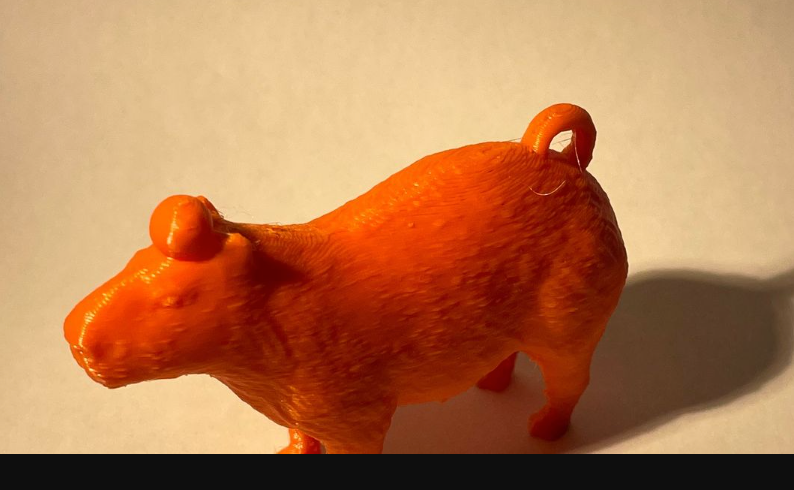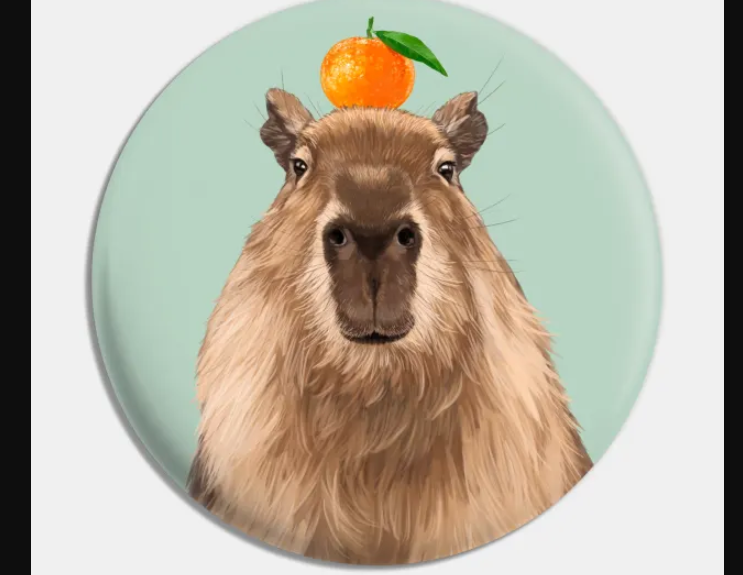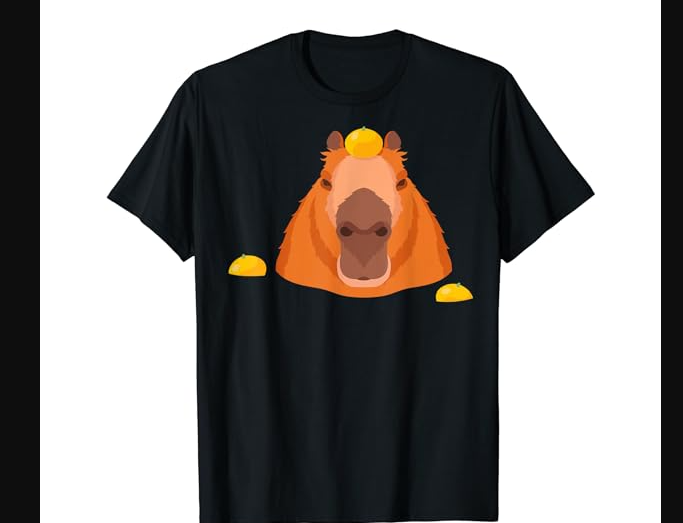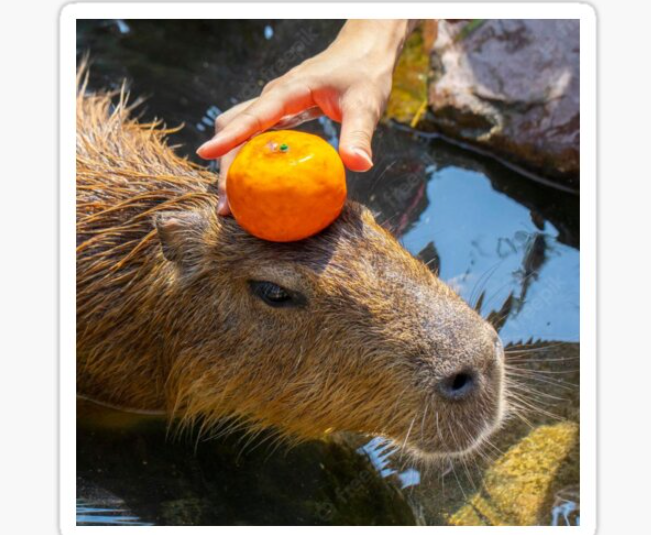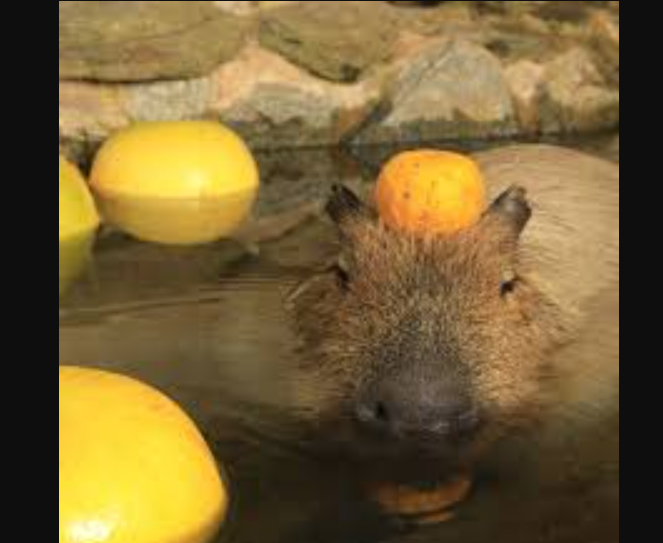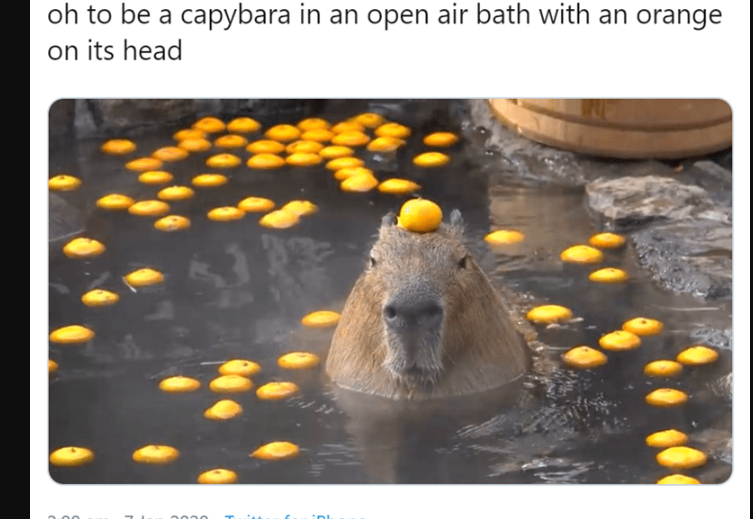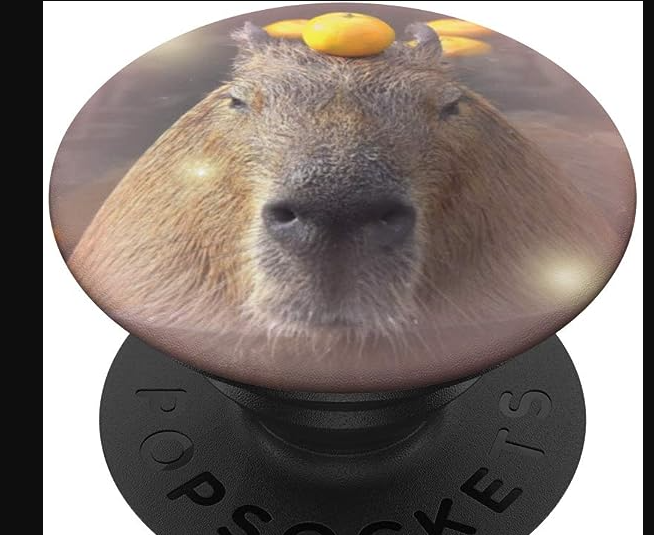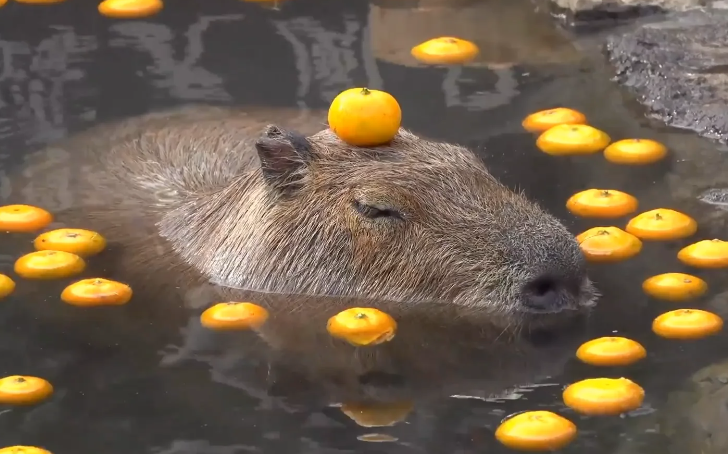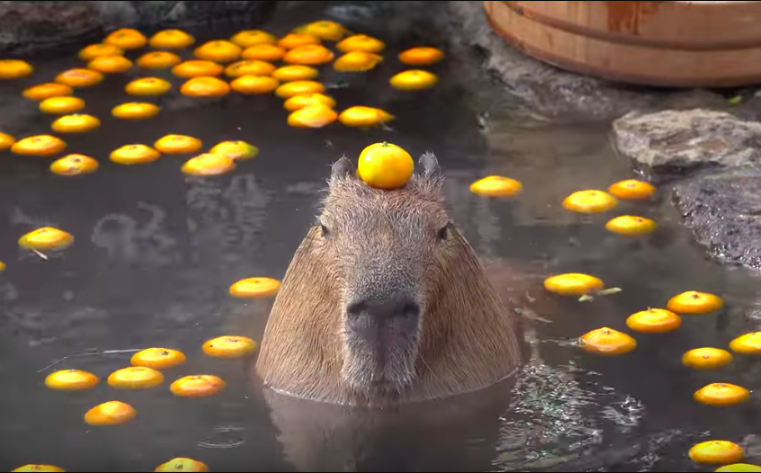The capybara is a rodent of the family Hydrochoeridae, found in South America. Although it is both the largest living rodent in the world and the largest land mammal by mass that is native to the Americas, it is a highly social animal and can be found in groups as large as 100 individuals. It is also the only member of the Hydrochoeridae family. The capybara is an herbivore, feeding on grasses, aquatic plants, and fruits. It is a good swimmer and can remain submerged for up to five minutes. It typically weighs between 66 and 143 pounds (30 and 65 kilograms).
There is no one-size-fits-all answer to this question, as the best way to keep a capybara with an orange on its head depends on the specific individuals involved and the situation in which they find themselves. However, some tips on how to keep a capybara with an orange on its head safe and comfortable would include making sure the orange is securely attached to the head so it cannot fall off and choke the animal, and providing the capybara with plenty of water to drink so it does not become dehydrated.
Why are capybaras with oranges?
Fruits are a great source of vitamins and minerals for capybaras, but they should be given only occasionally as they can’t process sugar and it can lead to bloating. Melons and oranges are the preferred fruits for capys, but any fruit will do as long as it is given in moderation.
The custom of taking yuzu baths on winter solstice has been around since the Edo period. It is said that this practice can prevent colds. The Izu Shaboten Zoo has been offering the “Capybara Yuzuyu” bath to the public on winter solstice since 1996.
Why is the Internet obsessed with capybara
I can definitely see why someone would be drawn to capybaras because of their personality! They seem like such unique creatures and it’s amazing how similar they are to dogs in the way they interact with people. I think it’s great that they’re becoming more popular and I’m sure we’ll be seeing more of them in the future!
Capybaras are large rodents that are native to South America. They are friendly animals and respond well to human contact. They can grow to be 4 feet long and weigh over 100 pounds. Capybaras are herbivores and their diet consists mostly of grasses and aquatic plants.
Why are capybaras not pets?
If you’re considering getting a capybara as a pet, there are a few things you should know. They are social creatures that do best in pairs, so you would need to purchase and house a pair of them, either two females or a male and a female; two males, even if they’re neutered, may be aggressive toward each other. Unless you’re able to carve out this kind of living situation, a capybara is not for you.
Capybaras are native to South America and are the largest living rodent in the world. They are social animals that live in groups of up to 100 individuals. Capybaras are excellent swimmers and can stay submerged for up to five minutes. They are also excellent climbers and can climb trees to escape predators.
Capybaras are vegetarians and their diet consists mostly of grasses and aquatic plants. They are gentle animals and are not known to be aggressive towards humans.
The main reason why we need a capybara for president is because they are intelligent, social animals that can work well in groups. They are also gentle and non-aggressive, which would be a refreshing change from the current president.
Why do Japanese people love capybaras?
The capybara is a large, furry rodent that is native to South America. They arrived in Japan during the 1960’s, and quickly became popular in interactive exhibits around the country due to their docile nature and ease of taming. Capybaras are social animals, and bond easily with humans, making them popular pets. However, their large size means that they require a lot of space, and they are not well suited to life in captivity.
Capybara meat is a popular dish in Venezuela, where it is typically dried with sea salt to give it a fishy flavor. Mr. Lord, who is from Venezuela, says that the meat is actually quite delicious, and more like rabbit than chicken.
What do capybaras smell like
Capybaras are unique among rodents in that they have several adaptations that help keep them clean and free of disease. They have an enzyme in their saliva that keeps their teeth from rotting and they have special belly glands that moisten their fur by secreting oil over it. Overall, capybaras do not stink. They have a musky odor that is similar to that of beavers or muskrats but it is not easy to notice it.
Herd animals typically have a shorter lifespan in the wild than their solitary counterparts. The average lifespan of a herd animal in the wild is up to 7 years.
Why did capybaras became a meme?
Capybara’s are becoming increasingly popular due to their gentle and friendly nature. People can easily relate to them, which is one of the reasons why they have gone viral.
Capybaras are large rodents found in Central and South America. They are nearly as fast as horses on land, but they prefer to dive underwater to escape from predators such as jaguars and anacondas. Capybaras have an average lifespan of 8-10 years. They can be seen in the wild in Central and South America.
Can capybaras hurt you
Capybaras are large rodents that are usually docile; however, their incisive teeth could cause serious injury if they were to bite someone. Localized care, antibiotic therapy when necessary, careful examination of the structures, tetanus and rabies immunization as indicated, and follow-up are recommended for wild animal bites.
Although they may appear shy and docile, capybaras are strong animals that can inflict serious bites. If you are attacked by a capybara, it is important to seek medical attention immediately and to follow up with your doctor. Proper wound care, careful examination of structures, tetanus immunization, rabies prevention, appropriate antibiotics, and follow-up form part of the proper management of victims of capybara attacks.
Do capybaras bite hard?
Capybaras have very strong teeth that can easily cause a lot of pain if they bite you. It is important to be careful around them and to avoid getting bitten.
Capybaras are good pets because they are friendly wild animals that enjoy being petted and cuddled. They are relatively easy to care for in the right conditions, making them good pets for people who want a friendly and affectionate animal in their lives.
Warp Up
A capybara with an orange on its head is a sight to behold. The orange fruit contrasts sharply with the capybara’s dark fur, making for astriking image. While one might assume that the orange is simply balanced precariously on the capybara’s head, it is actually quite common for these animals to purposely place the fruit there.
Some experts believe that the orange provides the capybara with a form of sun protection, as the fruit’s scent is known to repel certain insects. Others contend that the orange is simply a tasty treat that the capybara enjoys munching on. Regardless of the reasons behind this bizarre behavior, it’s certainly an interesting sight to see.
The capybara with orange on its head is a unique and interesting creature. It is not often that one sees a mammal with such a colorful head. This capybara is sure to stand out in a crowd and will be a source of fascination for many people.

